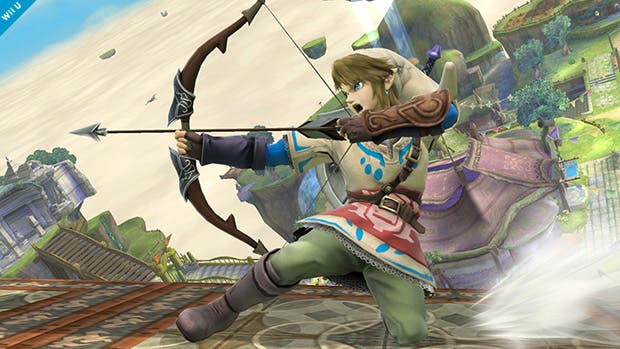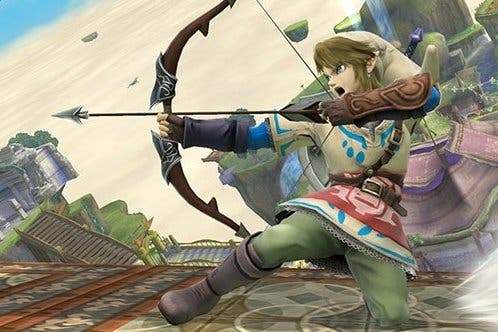Does Super Smash Bros. for 3DS and Wii U feel new enough?
Hands-on with the game in HD and on handheld.
Speaking shortly after the success of Smash Bros. Brawl, series boss Masahiro Sakurai swatted away the notion that the series would be released on a more regular basis. There wouldn't be enough new features to add, he argued, and he didn't want a quick and easy sequel to consist of just a few extra characters.
It was a noble response, and understandable, given that Sakurai was still catching his breath from the titanic effort his team had put into Brawl. A polished fighter with the largest Smash Bros. character roster yet, the series' Wii entry also included a stuffed-to-the-gills set of extra features (stretching to a library of Virtual Console demos and a compendium of every Nintendo-published title ever released).
And so here we are, six years later. Suddenly the question of whether the next Smash Bros. game will have enough new features seems something of a moot point - after such a long wait, many fans understandably want a new Smash Bros. game regardless. But just as with Nintendo's Mario Kart series - which similarly remains limited to a single entry per hardware generation - there is a broader expectation that any new Smash Bros. title should include something beyond a simple increase in polygon count.

We know a fair amount about the Wii U and 3DS entries already. A large section of their shared character roster has been shown in Sakurai's daily Miiverse posts, while the games' regular appearances in Nintendo Direct broadcasts have revealed new stages and items.
Gameplay remains largely similar. There's no major addition to shake up competitive play - as the Smash Ball's introduction did to Brawl - and the removal of the ability to transform between some characters mid-battle has made matches a little more predictable. Returning characters seem familiar, too. Play as Donkey Kong or Mario and you'll feel largely at home, although other well-known faces have been tweaked here and there. Luigi's Final Smash now uses his trusty Poltergust vacuum cleaner, while Zero Suit Samus' moveset has been beefed up to suit her upgraded status as a standalone playable character.
The games' newcomers are far more impressive. Take Animal Crossing's Villager, one of the roster's most imaginative additions. A character with no obvious offensive abilities, Villager is a surprisingly powerful choice, able to thwack enemies using a tree-planting shovel, or ride out of harm's way attached to his or her helium balloons (like the Wii Fit Trainer, palette swaps allow you to play the character as both male and female versions).
Villager's best attack is to launch a rocket-powered gyroid, which you can hop on top of for a quick ride into the midst of the action. It's a move bristling with potential - good for aiming at enemies trying to recover back onto the stage, or excellent as a recovery method for yourself if you're sent flying. Punch-Out!!'s Little Mac has a far more straightforward move-set, while Mario Galaxy's Rosalina and Luma combo appears to be another choice for fans of more offbeat fighting styles, an odd mix of the two-person Ice Climbers team and Olimar's ability to call upon extra help.

Every character will be available on the final 3DS and Wii U versions, although the E3 demos of each offered slightly different rosters. It meant we didn't try Rosalina and Luma on the 3DS edition, which already suffers somewhat from a cramped screen real estate. Smash Bros. isn't a game that requires beautiful HD backgrounds (although the Wii U version certainly benefits, and Skyward Sword's Skyloft is particularly impressive in 1080p). But problems occur when four characters are all fighting in a similar section of a stage, when the frantic movements of each player need to be clearly seen.
The 3DS version attempts to overcome this with the option of pencilling black outlines around characters to make them better stand out, while some item designs are simplified to better show up on the smaller screen. But it's still sometimes a struggle to see what's going on, especially if you don't benefit from the larger screen size of a 3DS XL.
It's less of a problem in Smash Run, the 3DS-only four-player dungeon rush mode, as players are sent off to separately roam around a huge area stuffed with enemies. The objective here is to defeat foes and collect the stat-boosting power-ups they drop. After a couple of minutes, all four stat-boosted players are then placed in a ring together to battle it out.
Smash Run maps are, unfortunately, reminiscent of the platforming sections in Brawl's Subspace Emissary campaign - strangely bland sequences that were only made worthwhile due to the stunning CGI movies that accompanied each chapter. There's no story at all here, although you do at least now face enemies from Nintendo's canon, such as Goombas, Shy Guys and Legend of Zelda's zombie-like ReDead.
Smash Bros. has always struggled with finding a single-player mechanic that works and it's interesting that, despite everything else that has been revealed, the Wii U version's campaign offering has been largely kept under wraps. But announcements about the games continue to arrive thick and fast - such as the multiple E3 reveals of more newcomer fighters, the three customisable Mii Fighter options and the intriguing inclusion of Nintendo's upcoming Amiibo figurines. Sadly there was no method of trying these in the demo we played.
There's plenty still to look forward to in Smash Bros., despite the 3DS incarnation feeling like a bit of a warm-up for the main event. Placed side-by-side it is somewhat inevitable that the handheld edition ends up feeling like the lesser of the two, although Nintendo has yet to reveal exactly what bonuses will be awarded to owners of both editions, and how the two will somehow interact. The chief differences will come in each game's single-player offerings and the main maps on offer - the 3DS set is fittingly weighted towards environments from handheld games, with the Wii U more focused on home console titles.
It means that the 3DS features exclusive stages like a course set around the coin-grabbing New Super Mario Bros. 2, where players who hoover up enough currency can turn into a gold version of themselves. You can also do battle on the back of Link's train from Zelda: Spirit Tracks, and in front of the Prism Tower from Pokémon X and Y. The Wii U edition gets stages from Mario Galaxy, Metroid: Other M and Mega Man's Wily Castle, which stars that series' Yellow Devil as a huge stage hazard.
It's been a long six years, and though the series' gameplay remains largely similar (and some would argue there's nothing wrong with that), the 3DS and Wii U versions' added character options, the promise of an as-yet unknown Wii U single-player mode, the array of new maps, Amiibo integration and other surprises mean I think the wait will have been worthwhile.






.png?width=291&height=164&fit=crop&quality=80&format=jpg&auto=webp)



